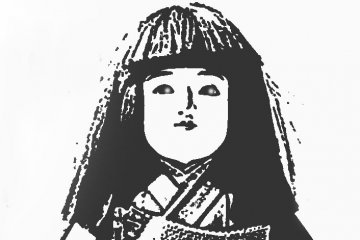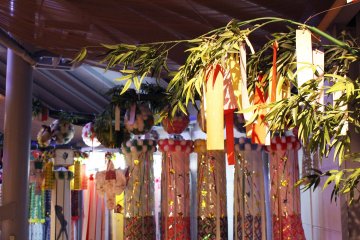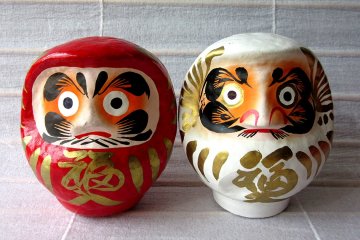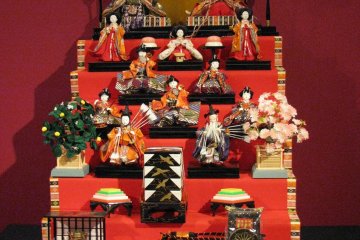In the history of many countries, dolls of stone, clay, wood and straw were considered to be magical objects and part of many rituals and legends. In Japan, dolls are called ningyo, and they too feature in many legends.
Misfortune floating away
Over 1000 years ago, the hina-okuri ritual began. Here, young girls began placing paper dolls onto wicker saucers. Letting them float down the river, the dolls were thought to carry away disease and misfortunes caused by evil spirits. At the Hikawa Shinto Shrine in Kawagoe, this tradition continues. Here, you buy a paper doll, blow onto it & rub its body, and then place it into a stream to help carry away misfortune.
The legend of the two lovers
In Japan, the Milky Way is called the Heavenly Silver River, and according to tradition, had not always divided the sky. A legend goes that a Heavenly Palace was once surrounded by a garden. At the same time, a young man named Hiko-boshi lived in the men's quarters and who grazed the starry flocks of heaven. So beautiful were the cycles of night & day created by them that the gods, led by the sun goddess Amaterasu, decided they should marry.
However, the two had never known such love. So strong was it that even a momentary separation was painful - the weaving was abandoned, and the star herds wandered. The nights turned dark and the mountains groaned. The people prayed for help and Amaterasu, to restore the order, separated the lovers with a wide river, the Milky Way. Ori-hime cried bitterly and the more she cried, the wider the river became. Hiko-boshi's flute sounded melancholy, his herds thinning. The time of rain began and the songs of the heavenly flute mixed with the sad whistling of the wind…
Amaterasu, touched by the strength of their love, softened. When the goddess learned that the two lovers sent each other messages with a magpie, she caught the messenger and ordered it to build a bridge over the Heavenly River once every seven days, so that the couple could meet. But the magpie erred and ever since, the bridge has been built only once a year, on the 7th day of the 7th month - a day known in Japan as Tanabata.

The tumbler doll legend
The legend goes that Bodhidharma sat and meditated for so long that he became like a round tumbler doll. This doll is the Daruma and is said to have been created by the Buddha's followers after his passing. The Daruma doll has been around for over 1500 years.

Celebrating status
These days, people tend to see dolls as a plaything or souvenir. For many centuries in Japan, though, the doll was a work of art and decoration. The famous Hinamatsuri Festival for young girls celebrated on March 3 originated in the 18th century. The story goes that the shogun at the time had many daughters, and the daughters had many dolls. It became fashionable to organize exhibitions of dolls representing the Imperial Court in the palace and other noble houses. Displayed on stands in 7, 5 or 3 tiers of covered red cloth, the dolls followed a hierarchy, with the Emperor and Empress on the top shelf.

The haunted doll
At an exhibition in Hokkaido in 1918, a teenager bought a doll for his 2-year-old sister Okiku. The girl was very happy with the doll, naming it Okiku and never parted with it. A year later, Okiku fell ill and died. In mourning, her family placed the doll on the family kamidana altar. Praying daily at the altar, they soon noticed that the doll's hair was gradually lengthening. Everyone believed that Okiku's soul was not yet at rest and had entered into the doll.
In 1938, the family decided to offer the doll to Mannen-ji Temple. The monks, too, noticed that its hair was growing and cut it for the first time when it reached 25cm. The doll's was cut many more times over the years but it continued to grow. According to experts, the hair grew at the rate of a 3-year-old child...













